- Home
- L. Ron Hubbard
Shadows From Boot Hill Page 9
Shadows From Boot Hill Read online
Page 9
drill: shoot.→ to text
Ellensburg Rodeo: Ellensburg is located just east of the Cascade Mountain Range in central Washington. The Ellensburg Rodeo was founded in 1923 by ranchers, farmers, Native Americans and community-minded citizens with the desire to celebrate a vanishing frontier way of life and to promote their community. Ellensburg lies in the heart of the cattle region, and roundup competitions were commonplace with the cowboys of the region.→ to text
fall guy: an easy victim.→ to text
fanned: 1. fanning; waving or slapping the hat against a horse’s sides while riding a bucker. Using the hat in this manner serves as a balance and when a rider loses his hat, he is usually not long in following it to the ground. 2. fired a series of shots from a single-action revolver by holding the trigger back and successively striking the hammer to the rear with the free hand.→ to text
forked leather: mounted a saddled horse.→ to text
forty-five or .45: a six-shot, single-action, .45-caliber revolver.→ to text
Fry, Elizabeth: (1780–1845) an English prison reformer, social reformer and philanthropist. She was the driving force in the legislation to make the treatment of prisoners more humane.→ to text
ginger: with great care or caution.→ to text
G-men: government men; agents of the Federal Bureau of Investigation.→ to text
hackamore: a halter with reins and a noseband instead of a bit (a metal bar that fits into the horse’s mouth and attaches to the reins), used for breaking horses and riding.→ to text
hair pants: chaps (leather leggings the cowboy wears to protect his legs) made with hair-covered hide.→ to text
half-breed: a person with parents of different races, usually a white father and Native American mother. The term originated in the East, not the Western frontier.→ to text
hazing: driving from horseback.→ to text
high-hatting: treating in a condescending way; showing haughty disdain for.→ to text
hog leg: another name for the popular Colt revolver also known as the Peacemaker.→ to text
hoof, on the: a cow that is still alive.→ to text
hoosegow: a jail.→ to text
hornswoggle: to trick, deceive or cheat.→ to text
hostler: a person who takes care of horses, especially at an inn.→ to text
John B.: Stetson; as the most popular broad-brimmed hat in the West, it became the generic name for hat. John B. Stetson was a master hat maker and founder of the company that has been making Stetsons since 1865. Not only can the Stetson stand up to a terrific amount of beating, the cowboy’s hat has more different uses than any other garment he wears. It keeps the sun out of the eyes and off the neck; it serves as an umbrella; it makes a great fan, which sometimes is needed when building a fire or shunting cattle about; the brim serves as a cup to water oneself, or as a bucket to water the horse or put out the fire.→ to text
lariat: a long noosed rope used for catching horses, cattle, etc.; lasso.→ to text
lights: mental ability, knowledge or understanding.→ to text
livery stable: a stable that accommodates and looks after horses for their owners.→ to text
lobo: wolf; one who is regarded as predatory, greedy and fierce.→ to text
locoweed: any of a number of plants widespread in the mountains of the Western US that make livestock act crazy when they eat them.→ to text
lynch mob: a group of people who capture and hang someone without legal arrest and trial, because they think the person has committed a crime.→ to text
Major Reno: Major Marcus Albert Reno (1834–1889); a career military officer in the American Civil War, most noted for his role in the Battle of Little Big Horn, also known as Custer’s Last Stand, on June 25, 1876. Custer split his command of the US Cavalry Regiment, numbering 650 men, into three battalions. Reno commanded one battalion and crossed the river to attack the southern end of the Indian camp. Realizing a trap had been set, he ordered his men dismounted and went into a defensive formation. Colonel Custer, originally intending to support Reno, attacked the middle of the encampment instead, where he and all 197 of the men in his battalion were killed. Major Reno’s battalion of 134 had 36 men killed and 26 wounded.→ to text
Marshall, John: a book by John Marshall (1755–1835), an American statesman and jurist who shaped American constitutional law and made the Supreme Court a center of power. He was the fourth Chief Justice of the United States, serving from 1801 until his death. He participated in over one thousand Supreme Court decisions and wrote 519 of the opinions himself.→ to text
Morris chair: an early type of reclining chair from 1866 manufactured by William Morris' firm, Morris & Company. The characteristic feature of the Morris chair is a hinged back, set between two un-upholstered arms, with the reclining angle adjusted through a row of pegs, holes or notches in each arm. → to text
old saw about “dogs and children”: referring to the old saying that one cannot fool dogs and children: “If dogs and children like you, you must be okay.”→ to text
outlaw: a wild or vicious horse.→ to text
Overland: Overland Stage; stagecoach line in the mid-nineteenth century that transported mail and passengers.→ to text
papooses: Native American infants or very young children.→ to text
physiognomy: the features of somebody’s face, especially when they are used as indicators of that person’s character or temperament.→ to text
pinwheel: a movement or trick with a gun; the gun is held in virtual firing position except that the forefinger is not in the trigger guard. The gun is flipped into the air so that it revolves and the butt drops naturally into the palm of the hand.→ to text
plug: shoot.→ to text
plugged centavo: a worthless coin. A plugged coin was counterfeit or had a plug of metal removed from the center. Centavo is Spanish for a cent or penny.→ to text
plug tobacco: shredded tobacco leaves pressed into a block.→ to text
polecat: skunk; a thoroughly contemptible person.→ to text
pulled leather: grabbed onto the saddle while riding a bucking horse. It shows a lack of skill or courage, or both. A cowboy hates to have to grab the saddle horn to stay on, and most will allow themselves to be thrown off before they will pull leather.→ to text
puncher: a hired hand who tends cattle and performs other duties on horseback.→ to text
quirt: a riding whip with a short handle and a braided leather lash.→ to text
repeater watch: a pocket watch that chimes every one, twelve or twenty-four hours.→ to text
roostered: drunk.→ to text
roweled: having used the small, spiked revolving wheels at the ends of spurs, rolled across the horse’s side.→ to text
rowels: the small spiked revolving wheels on the ends of spurs, which are attached to the heels of a rider’s boots and used to nudge a horse into going faster.→ to text
running iron: a branding iron that is not bent into the shape of the mark, but rather requires the user to write the desired brand.→ to text
sap: dumb guy; a fool.→ to text
Scheherazade: the female narrator of The Arabian Nights, who during one thousand and one adventurous nights saved her life by entertaining her husband, the king, with stories.→ to text
serape: a long, brightly colored woolen blanket worn as a cloak by some men from Mexico, Central America and South America.→ to text
shucks, wasn’t such: was of little value.→ to text
sombrero: a Mexican style of hat that was common in the Southwest. It had a high-curved wide brim, a long, loose chin strap and the crown was dented at the top. Like cowboy hats generally, it kept off the sun and rain, fended off the branches and served as a handy bucket or cup.→ to text
sorrel: a horse with a reddish-brown coat.→ to text
Stetson: as the most popular broad-brimmed hat in the West, it became the generic name for hat. John B. Stetson was a master hat
maker and founder of the company that has been making Stetsons since 1865. Not only can the Stetson stand up to a terrific amount of beating, the cowboy’s hat has more different uses than any other garment he wears. It keeps the sun out of the eyes and off the neck; it serves as an umbrella; it makes a great fan, which sometimes is needed when building a fire or shunting cattle about; the brim serves as a cup to water oneself, or as a bucket to water the horse or put out the fire.→ to text
sunfish: a way of bucking; the horse throws its middle violently to one side, then the other, so that it seems its shoulder may touch the ground, letting the sunlight hit its belly.→ to text
swap ends: a movement peculiar to a bronc where he quickly reverses his position, making a complete half-circle in the air.→ to text
thirteenth step: gallows; traditionally, there are thirteen steps leading up to a gallows.→ to text
Tipperary: a town of south-central Ireland, southwest of Dublin. The song “It’s a Long Way to Tipperary” was used as marching music by the British Expeditionary Force in World War I.→ to text
vigilantes: citizens banded together in the West as vigilance committees, without legal sanction and usually in the absence of effective law enforcement, to take action against men viewed as threats to life and property. The usual pattern of vigilance committees was to grab their enemies (guilty or not), stage a sort of trial and hang them. Their other enemies were then likely to get out of town.→ to text
waddies: cowboys, especially those who drift from ranch to ranch and help out in busy times. In the spring and fall when some ranches were short-handed, they took on anyone who was able to ride a horse and used him for a week or so; hence the word waddy, derived from wadding—anything to fill in. Some cowmen used the word to mean a cattle rustler; later it was applied to any cowboy.→ to text
whippersnapper: an impertinent young person, usually a young man, who lacks proper respect for the older generation; a youngster with an excess of both ambition and impertinence.→ to text
Winchester: an early family of repeating rifles; a single-barreled rifle containing multiple rounds of ammunition. Manufactured by the Winchester Repeating Arms Company, it was widely used in the US during the latter half of the nineteenth century. The 1873 model is often called “the gun that won the West” for its immense popularity at that time, as well as its use in fictional Westerns.→ to text
ye: you.→ to text
L. Ron Hubbard in the
Golden Age of
Pulp Fiction
In writing an adventure story
a writer has to know that he is adventuring
for a lot of people who cannot.
The writer has to take them here and there
about the globe and show them
excitement and love and realism.
As long as that writer is living the part of an
adventurer when he is hammering
the keys, he is succeeding with his story.
Adventuring is a state of mind.
If you adventure through life, you have a
good chance to be a success on paper.
Adventure doesn’t mean globe-trotting,
exactly, and it doesn’t mean great deeds.
Adventuring is like art.
You have to live it to make it real.
— L. Ron Hubbard
L. Ron Hubbard
and American
Pulp Fiction
BORN March 13, 1911, L. Ron Hubbard lived a life at least as expansive as the stories with which he enthralled a hundred million readers through a fifty-year career.
Originally hailing from Tilden, Nebraska, he spent his formative years in a classically rugged Montana, replete with the cowpunchers, lawmen and desperadoes who would later people his Wild West adventures. And lest anyone imagine those adventures were drawn from vicarious experience, he was not only breaking broncs at a tender age, he was also among the few whites ever admitted into Blackfoot society as a bona fide blood brother. While if only to round out an otherwise rough and tumble youth, his mother was that rarity of her time—a thoroughly educated woman—who introduced her son to the classics of Occidental literature even before his seventh birthday.
But as any dedicated L. Ron Hubbard reader will attest, his world extended far beyond Montana. In point of fact, and as the son of a United States naval officer, by the age of eighteen he had traveled over a quarter of a million miles. Included therein were three Pacific crossings to a then still mysterious Asia, where he ran with the likes of Her British Majesty’s agent-in-place for North China, and the last in the line of Royal Magicians from the court of Kublai Khan. For the record, L.RonHubbard was also among the first Westerners to gain admittance to forbidden Tibetan monasteries below Manchuria, and his photographs of China’s Great Wall long graced American geography texts.
Upon his return to the United States and a hasty completion of his interrupted high school education, the young Ron Hubbard entered George Washington University. There, as fans of his aerial adventures may have heard, he earned his wings as a pioneering barnstormer at the dawn of American aviation. He also earned a place in free-flight record books for the longest sustained flight above Chicago. Moreover, as a roving reporter for Sportsman Pilot (featuring his first professionally penned articles), he further helped inspire a generation of pilots who would take America to world airpower.
L. Ron Hubbard, left, at Congressional Airport, Washington, DC, 1931, with members of George Washington University flying club.
Immediately beyond his sophomore year, Ron embarked on the first of his famed ethnological expeditions, initially to then untrammeled Caribbean shores (descriptions of which would later fill a whole series of West Indies mystery-thrillers). That the Puerto Rican interior would also figure into the future of Ron Hubbard stories was likewise no accident. For in addition to cultural studies of the island, a 1932–33 LRH expedition is rightly remembered as conducting the first complete mineralogical survey of a Puerto Rico under United States jurisdiction.
There was many another adventure along this vein: As a lifetime member of the famed Explorers Club, L.RonHubbard charted North Pacific waters with the first shipboard radio direction finder, and so pioneered a long-range navigation system universally employed until the late twentieth century. While not to put too fine an edge on it, he also held a rare Master Mariner’s license to pilot any vessel, of any tonnage in any ocean.
Capt. L. Ron Hubbard in Ketchikan, Alaska, 1940, on his Alaskan Radio Experimental Expedition, the first of three voyages conducted under the Explorers Club Flag.
Yet lest we stray too far afield, there is an LRH note at this juncture in his saga, and it reads in part:
“I started out writing for the pulps, writing the best I knew, writing for every mag on the stands, slanting as well as I could.”
To which one might add: His earliest submissions date from the summer of 1934, and included tales drawn from true-to-life Asian adventures, with characters roughly modeled on British/American intelligence operatives he had known in Shanghai. His early Westerns were similarly peppered with details drawn from personal experience. Although therein lay a first hard lesson from the often cruel world of the pulps. His first Westerns were soundly rejected as lacking the authenticity of a Max Brand yarn (aparticularly frustrating comment given L.RonHubbard’s Westerns came straight from his Montana homeland, while Max Brand was a mediocre New York poet named Frederick Schiller Faust, who turned out implausible six-shooter tales from the terrace of an Italian villa).
Nevertheless, and needless to say, L.RonHubbard persevered and soon earned a reputation as among the most publishable names in pulp fiction, with a ninety percent placement rate of first-draft manuscripts. He was also among the most prolific, averaging between seventy and a hundred thousand words a month. Hence the rumors that L.RonHubbard had redesigned a typewriter for faster keyboard action and pounded out manuscripts on a co
ntinuous roll of butcher paper to save the precious seconds it took to insert a single sheet of paper into manual typewriters of the day.
L. Ron Hubbard, circa 1930, at the outset of a literary career that would span half a century.
That all L. Ron Hubbard stories did not run beneath said byline is yet another aspect of pulp fiction lore. That is, as publishers periodically rejected manuscripts from top-drawer authors if only to avoid paying top dollar, L. Ron Hubbard and company just as frequently replied with submissions under various pseudonyms. In Ron’s case, the list included: Rene Lafayette, Captain Charles Gordon, Lt. Scott Morgan and the notorious Kurt von Rachen—supposedly on the lam for a murder rap, while hammering out two-fisted prose in Argentina. The point: While L.Ron Hubbard as Ken Martin spun stories of Southeast Asian intrigue, LRH as Barry Randolph authored tales of romance on the Western range—which, stretching between a dozen genres is how he came to stand among the two hundred elite authors providing close to a million tales through the glory days of American Pulp Fiction.
A Man of Many Names
Between 1934 and 1950, L. Ron Hubbard authored more than fifteen million words of fiction in more than two hundred classic publications.
To supply his fans and editors with stories across an array of genres and pulp titles, he adopted fifteen pseudonyms in addition to his already renowned L. Ron Hubbard byline.
______
Winchester Remington Colt
Lt. Jonathan Daly
Capt. Charles Gordon
Capt. L. Ron Hubbard
Bernard Hubbel
Michael Keith
Rene Lafayette
Legionnaire 148
Legionnaire 14830
Ken Martin
Scott Morgan
Lt. Scott Morgan
Kurt von Rachen
Barry Randolph
Capt. Humbert Reynolds
In evidence of exactly that, by 1936 L. Ron Hubbard was literally leading pulp fiction’s elite as president of New York’s American Fiction Guild. Members included a veritable pulp hall of fame: Lester “Doc Savage” Dent, Walter “The Shadow” Gibson, and the legendary Dashiell Hammett—to cite but a few.

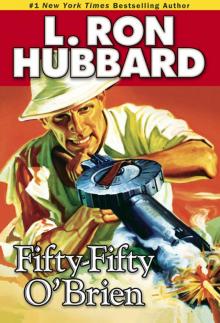 Fifty-Fifty O'Brien
Fifty-Fifty O'Brien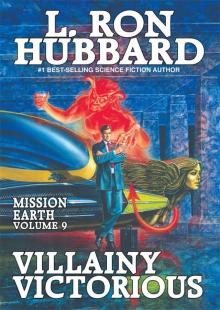 Villainy Victorious
Villainy Victorious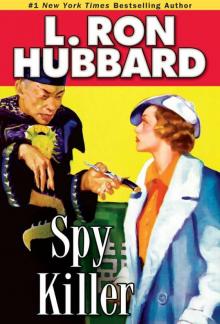 Spy Killer
Spy Killer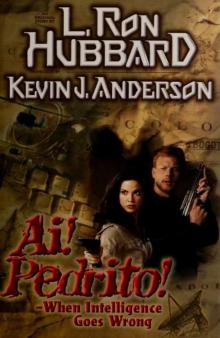 Ai! Pedrito!: When Intelligence Goes Wrong
Ai! Pedrito!: When Intelligence Goes Wrong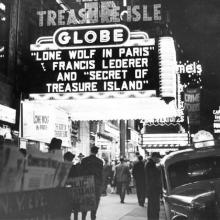 The Dangerous Dimension
The Dangerous Dimension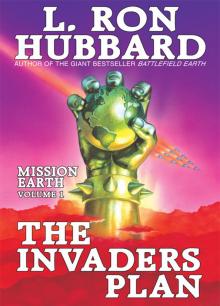 Mission Earth Volume 1: The Invaders Plan
Mission Earth Volume 1: The Invaders Plan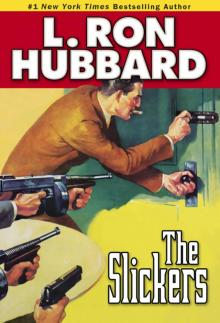 The Slickers
The Slickers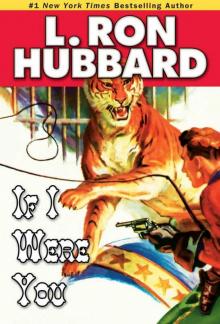 If I Were You
If I Were You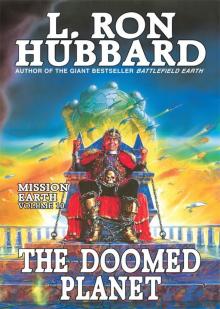 The Doomed Planet
The Doomed Planet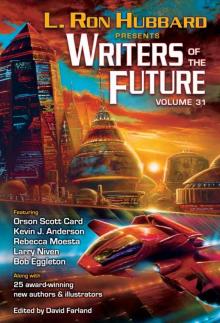 Writers of the Future Volume 31
Writers of the Future Volume 31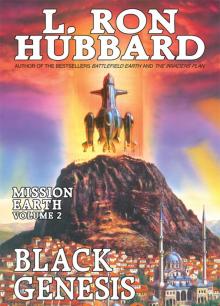 Mission Earth Volume 2: Black Genesis
Mission Earth Volume 2: Black Genesis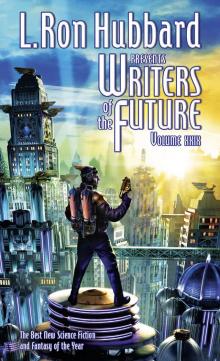 Writers of the Future: 29
Writers of the Future: 29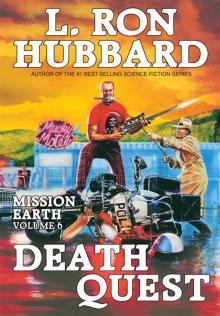 Death Quest
Death Quest The Enemy Within
The Enemy Within Orders Is Orders
Orders Is Orders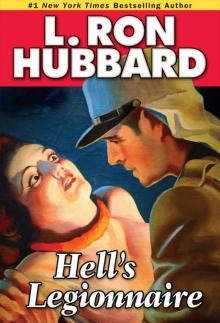 Hell's Legionnaire
Hell's Legionnaire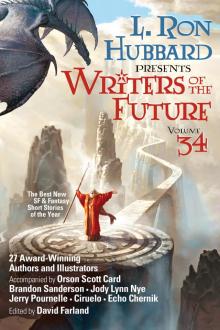 L. Ron Hubbard Presents Writers of the Future 34
L. Ron Hubbard Presents Writers of the Future 34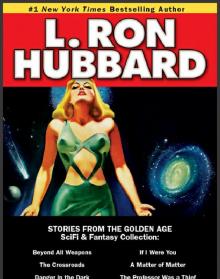 The Scifi & Fantasy Collection
The Scifi & Fantasy Collection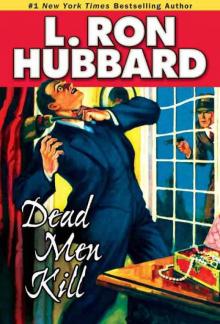 Dead Men Kill
Dead Men Kill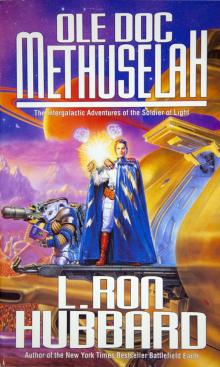 Ole Doc Methuselah: The Intergalactic Adventures of the Soldier of Light
Ole Doc Methuselah: The Intergalactic Adventures of the Soldier of Light Shadows From Boot Hill
Shadows From Boot Hill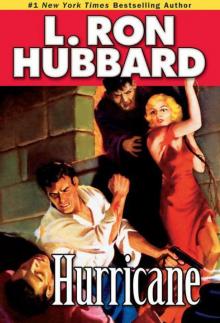 Hurricane
Hurricane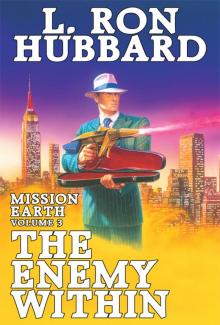 Mission Earth Volume 3: The Enemy Within
Mission Earth Volume 3: The Enemy Within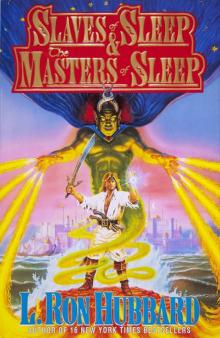 Slaves of Sleep & the Masters of Sleep
Slaves of Sleep & the Masters of Sleep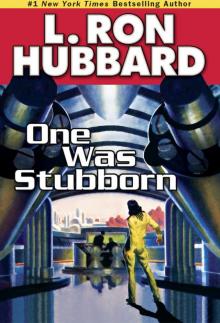 One Was Stubborn
One Was Stubborn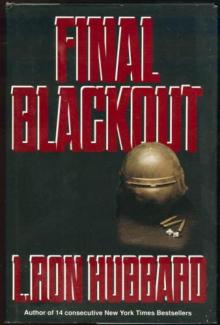 Final Blackout: A Futuristic War Novel
Final Blackout: A Futuristic War Novel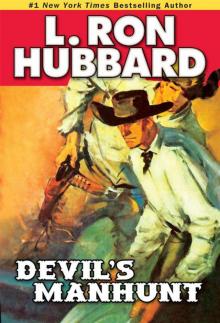 Devil's Manhunt
Devil's Manhunt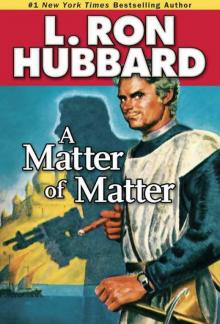 A Matter of Matter
A Matter of Matter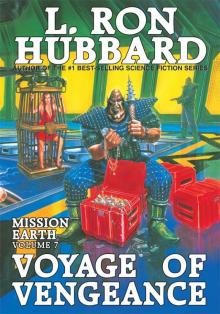 Voyage of Vengeance
Voyage of Vengeance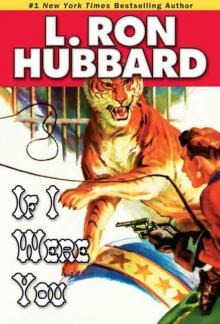 If I Were You (Science Fiction & Fantasy Short Stories Collection)
If I Were You (Science Fiction & Fantasy Short Stories Collection)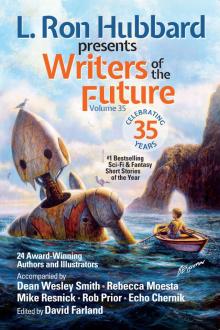 L. Ron Hubbard Presents Writers of the Future Volume 35
L. Ron Hubbard Presents Writers of the Future Volume 35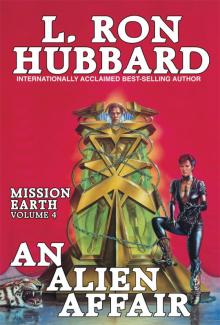 Mission Earth Volume 4: An Alien Affair
Mission Earth Volume 4: An Alien Affair Black Genesis
Black Genesis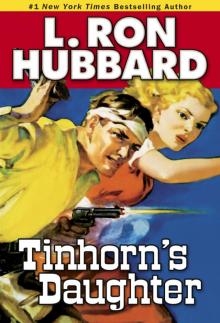 Tinhorn's Daughter
Tinhorn's Daughter Trouble on His Wings
Trouble on His Wings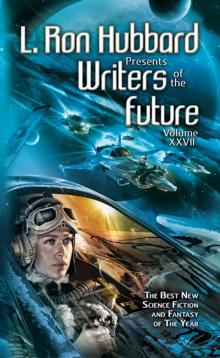 Writers of the Future Volume 27: The Best New Science Fiction and Fantasy of the Year
Writers of the Future Volume 27: The Best New Science Fiction and Fantasy of the Year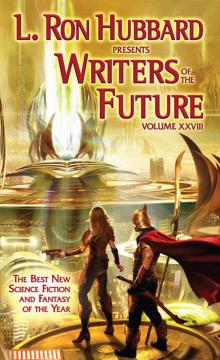 Writers of the Future Volume 28: The Best New Science Fiction and Fantasy of the Year
Writers of the Future Volume 28: The Best New Science Fiction and Fantasy of the Year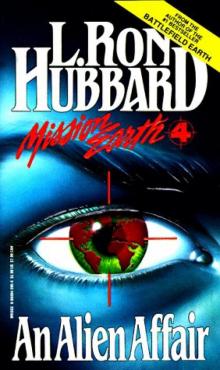 An Alien Affair
An Alien Affair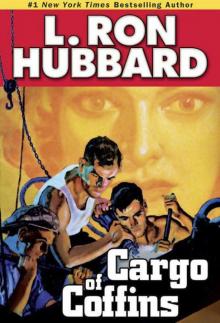 Cargo of Coffins
Cargo of Coffins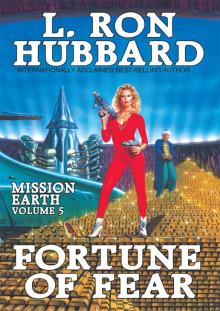 Mission Earth Volume 5: Fortune of Fear
Mission Earth Volume 5: Fortune of Fear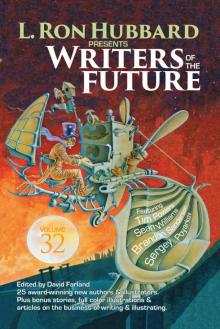 Writers of the Future 32 Science Fiction & Fantasy Anthology
Writers of the Future 32 Science Fiction & Fantasy Anthology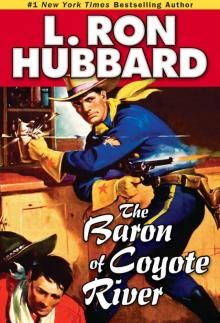 The Baron of Coyote River
The Baron of Coyote River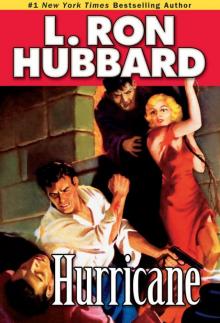 Hurricane (Stories From the Golden Age)
Hurricane (Stories From the Golden Age)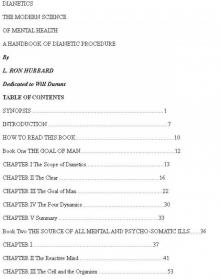 Dianetics: The Modern Science of Mental Health
Dianetics: The Modern Science of Mental Health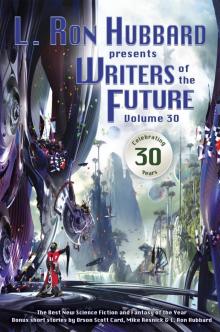 Writers of the Future, Volume 30
Writers of the Future, Volume 30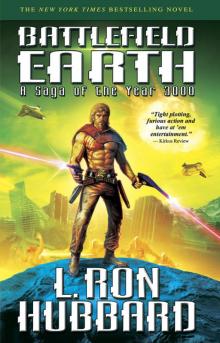 Battlefield Earth: A Saga of the Year 3000
Battlefield Earth: A Saga of the Year 3000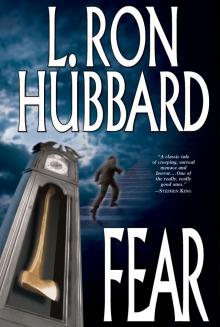 Fear
Fear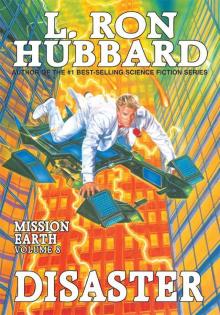 Disaster
Disaster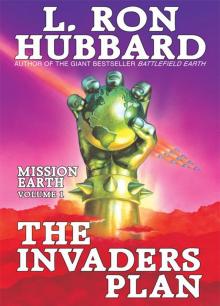 Invaders Plan, The: Mission Earth Volume 1
Invaders Plan, The: Mission Earth Volume 1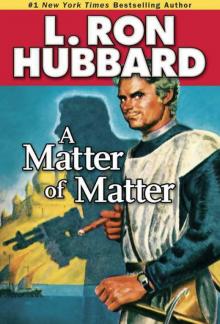 A Matter of Matter (Stories from the Golden Age)
A Matter of Matter (Stories from the Golden Age)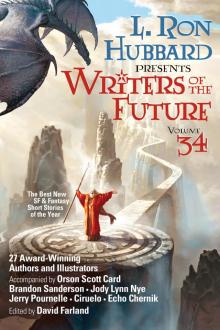 Writers of the Future Volume 34
Writers of the Future Volume 34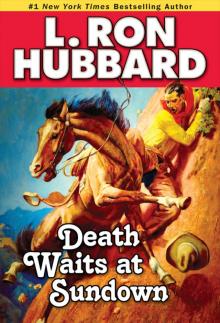 Death Waits at Sundown
Death Waits at Sundown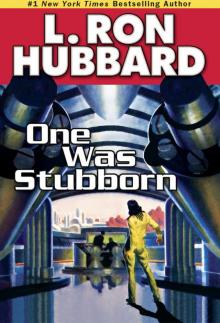 One Was Stubbron
One Was Stubbron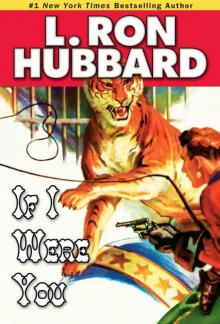 If I Were You (Stories from the Golden Age)
If I Were You (Stories from the Golden Age) Writers of the Future 32 Science Fiction & Fantasy Anthology (L. Ron Hubbard Presents Writers of the Future)
Writers of the Future 32 Science Fiction & Fantasy Anthology (L. Ron Hubbard Presents Writers of the Future)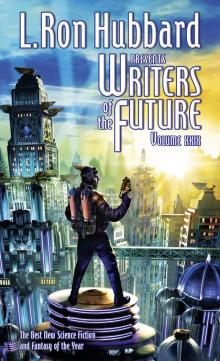 Writers of the Future, Volume 29
Writers of the Future, Volume 29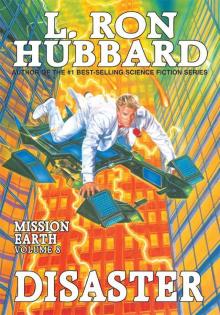 Mission Earth Volume 8: Disaster
Mission Earth Volume 8: Disaster Mission Earth 6: Death Quest
Mission Earth 6: Death Quest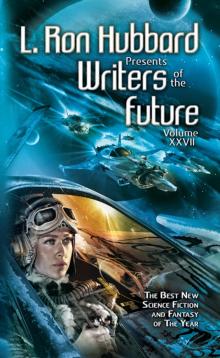 Writers of the Future, Volume 27
Writers of the Future, Volume 27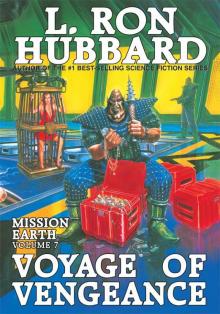 Mission Earth Volume 7: Voyage of Vengeance
Mission Earth Volume 7: Voyage of Vengeance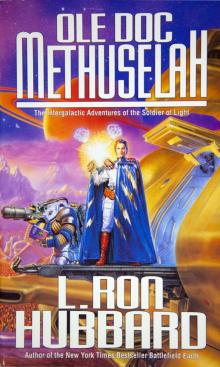 Ole Doc Methuselah
Ole Doc Methuselah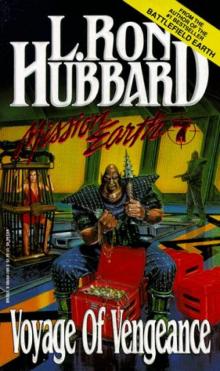 Mission Earth 07: Voyage of Vengeance
Mission Earth 07: Voyage of Vengeance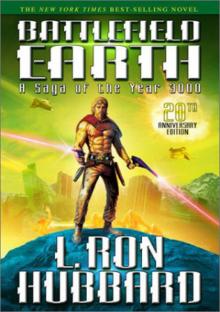 Battlefield Earth
Battlefield Earth Fortune of Fear
Fortune of Fear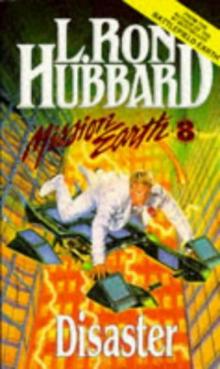 Mission Earth 8: Disaster
Mission Earth 8: Disaster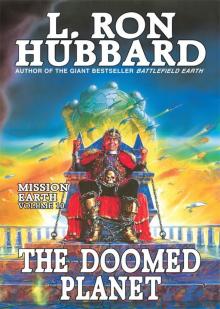 Mission Earth Volume 10: The Doomed Planet
Mission Earth Volume 10: The Doomed Planet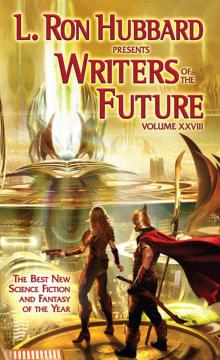 Writers of the Future, Volume 28
Writers of the Future, Volume 28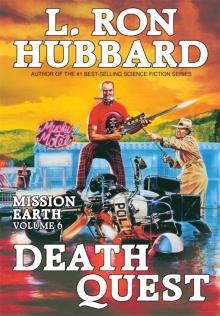 Mission Earth Volume 6: Death Quest
Mission Earth Volume 6: Death Quest Dead Men Kill (Stories from the Golden Age)
Dead Men Kill (Stories from the Golden Age)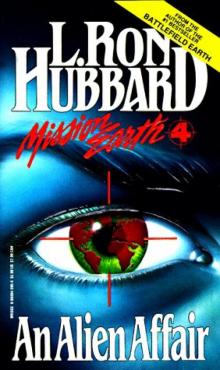 Mission Earth 4: An Alien Affair
Mission Earth 4: An Alien Affair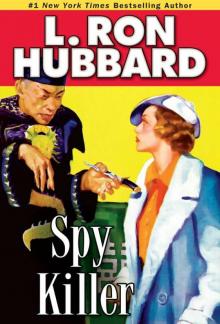 Spy Killer (Stories from the Golden Age)
Spy Killer (Stories from the Golden Age)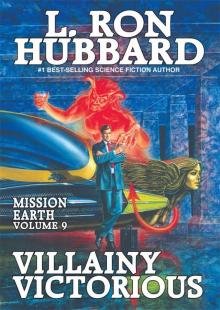 Mission Earth Volume 9: Villainy Victorious
Mission Earth Volume 9: Villainy Victorious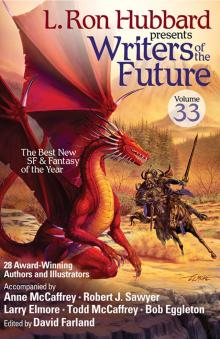 L. Ron Hubbard Presents Writers of the Future, Volume 33
L. Ron Hubbard Presents Writers of the Future, Volume 33